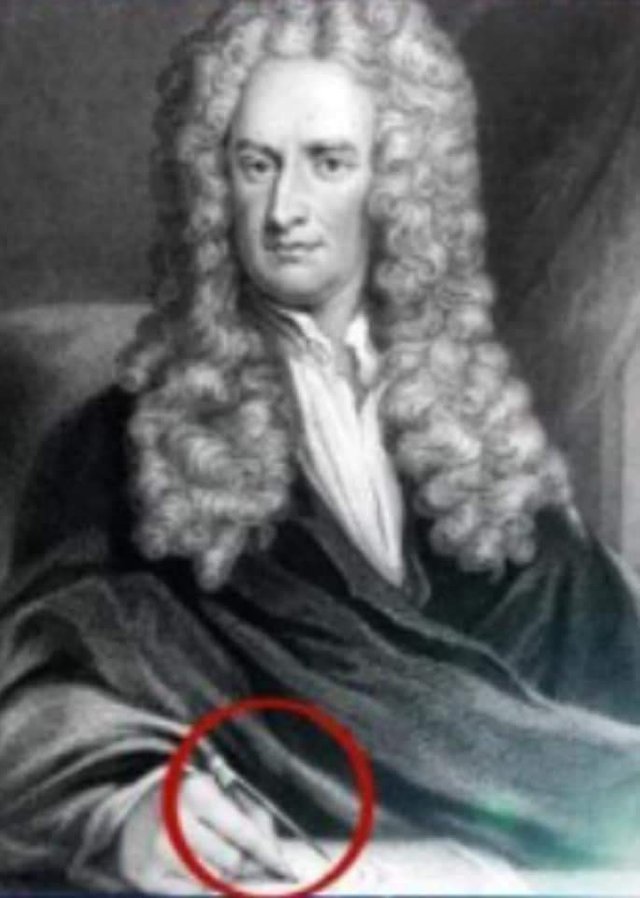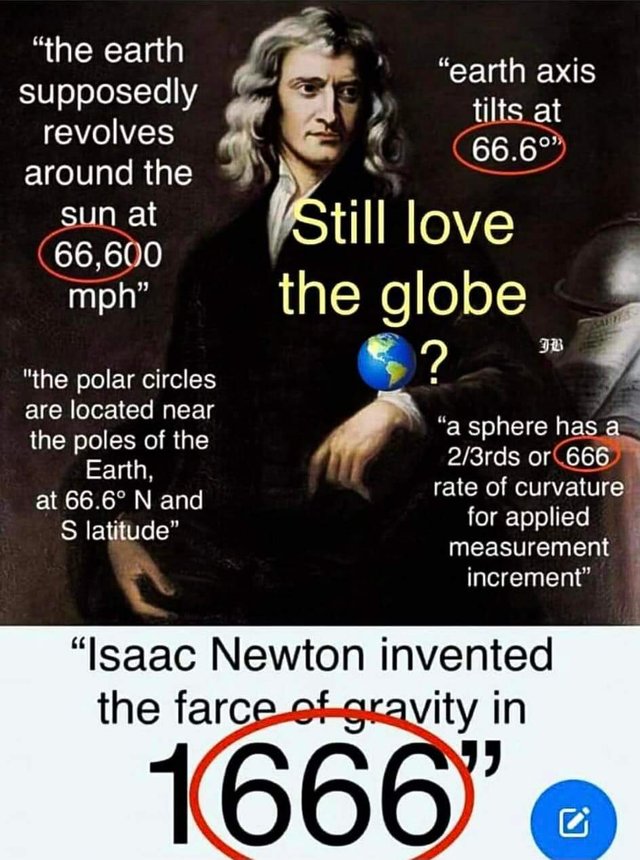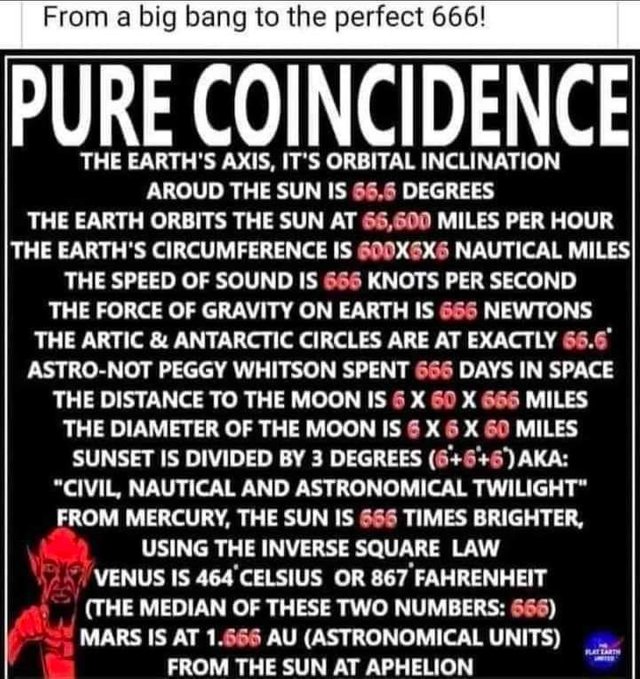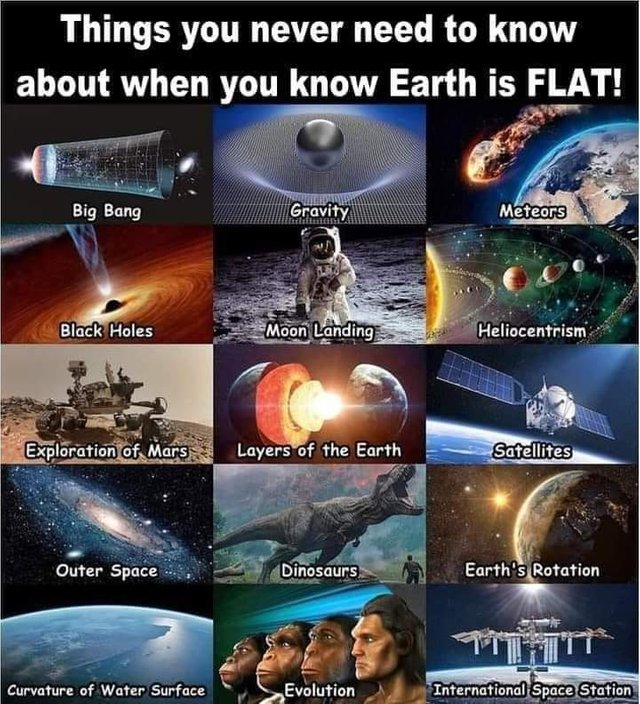
There are many problems with the gravitational theory. One of them is that according to that theory, the gravitational attraction to the earth by all persons and objects remains the same at all places. That means that the gravitational force at the North Pole is the same as the gravitational force at the equator. That poses a very real problem if the earth is spinning as alleged. That is because the centrifugal force decreases every mile toward the north pole, where the centrifugal force is ultimately reduced to zero, because the North Pole is the axis of the supposedly spinning earth. On a globe, as you travel north or south of the equator the circumference parallel to the equator becomes less. Consequently, the speed of the earth’s spin at those more northern and southern latitudes from the equator would be slower than its speed of spin at the equator. For example, at the 45 degree north latitude, the earth’s spin should be approximately 700 miles per hour. One hundred feet from the North Pole, the earth’s spin should be
reduced to one quarter mile per hour (1,308 feet per hour).
As the speed of the spin is reduced, so also is the correlative centrifugal force. What is the amount of decrease of the centrifugal force between the equator to one hundred feet of
the North Pole? There would be a 4,000 fold reduction (1,000MPH vs. 1⁄4 MPH) in centrifugal force from the equator to a point
one hundred feet of the North Pole. That means, assuming (as is required by the theory of gravity) that the force of gravity remains
constant over the entire surface of the earth, a 175 pound man at the equator would weigh 700,000 pounds if he traveled to within
100 feet of the North Pole.378 Assuming the earth is spinning, the decrease in the centrifugal force as one approaches the North Pole, means that a person would be crushed by the force of gravity, before he ever reached the North Pole. The spinning earth and the
mystical force of gravity are thus proven to be preposterous fictions.
Some will point out that objects do in fact have different weights at the equator and the North Pole. However, the difference
is the reverse of what would be expected by the interaction between centrifugal force and the theory of gravity. Objects weigh a fraction of a percentage less at the North Pole than at the equator. The reason has to do with the fact that there is more atmospheric pressure the further one travels towards the equator,
which causes the objects at the equator to weigh slightly more.
There is no such thing as gravity; gravity is not necessary on a level plain. It is density that keeps objects from floating off the
surface of the earth. People and objects are heavier than the air and therefore do not float off the ground. There are some gasses, of
course, that are lighter than air, and they float off the ground. Everyone has seen helium balloons float up in the air. Everyone
understands that helium balloons are not some sort of anti-gravity devices; they float up in the air, because helium is lighter than air.
Why do people not understand that apples fall from trees to the ground, not because of gravity, but because apples are denser than
air? They believe in the mystical force of gravity, not because it has been proven true, but because they have been brainwashed into
believing in it. Gravity does not exist.
David Wardlow Scott explains:
“Any object which is heavier than air and which is unsupported, has a natural tendency to fall by its own weight. Newton's famous apple, or any other apple when ripe, loses hold of its stalk and being heavier than the air, drops as a matter of necessity to the ground,
totally irrespective of any attraction of the Earth. For, if such attraction existed, why does not the Earth attract the rising smoke which is not nearly so heavy as the apple? The answer is simple—because the smoke is lighter than the air and therefore, does not fall but ascends.”
Gravitation is only a subterfuge, employed by
Newton in his attempt to prove that the Earth
revolves round the Sun and the quicker it is relegated to the tomb of all the Capulets, the
better will it be for all classes of society. He
draped his idol with the tawdry tinsel of false
science, knowing well how to beguile the
thoughtless multitude, for with a little alteration of Byron's famous lines, it is still true that “[m]ortals, like moths, are often caught by glare and folly wins success where Seraphs might despair.”



Gravitation is a clever illustration of the
art of hocus-pocus —heads I win, tails you lose; Newton won his fame, and the people lost their senses. Gravity is more akin to a heathen religious belief, than it
is a scientific theory. The “scientists” promoting gravity are like priestsin a religious cult who have immortalized the man who first
postulated gravity and follow the gravitational theory like some religious dogma. The popular cult-like belief in gravity started with Sir
Isaac Newton, who was a scientist who published his historic three-volumePhilosophiæNaturalis Principia Mathematica (The Mathematical Principles of Natural Philosophy) in 1687. In that
book, Newton propounded his laws of motion and universal gravity. Newton is viewed by most in the scientific community as
the seminal theoretician for the postulation of gravity. Gravity is not supported by any scientific proof. What then was the source of the theory? S. Pancoast reveals that “the law of attraction and repulsion” in the Kabbalah was popularized under the name “gravity” by Isaac Newton.
S. Pancoast states:
“He [Pythagoras] was never permitted to declare publicly what he knew and believed, but taught his immediate pupils all the wonders of his philosophy, under the most binding obligation of secrecy. Pythagoras was forbidden to divulge this knowledge because it would reveal the law of attraction and repulsion, which constituted one of
the great secrets of the sanctuary. Over a
millennium later, Newton was led to the
discovery of these forces by his studies of the
Kabbalah.
What most do not know is that Isaac Newton was a religious mystic, who was very well studied in Judaism, and Jewish texts. Aron Heller at the Times of Israel revealed that
Newton “learned how to read Hebrew, scrolled through the Bible and delved into the study of Jewish philosophy, the mysticism of
Kabbalah and the Talmud.”
Indeed, one writer has revealed that
“7,500 pages of his [Newton’s] theological speculations, written in his own hand, are digitized at Israel’s national library at Hebrew
University.” Who do we find in possession as the caretaker of Isaac Newton’s religious writings before they ended up in the National
Library of Israel at Hebrew University in Jerusalem? It was a Zionist Jew, Abraham Yahuda, who obtained and maintained
Newton’s theological writings. Yahuda scoured the earth to collect Isaac Newton’s writings on religion. Why was Yahuda so
interested in the writings of Isaac Newton?
Sarah Dry states that “Yahuda set about trying to purchase the Newton papers and wrote to [his wife] Ethel on July 28, ‘I am thrilled with the thought of acquiring them. He wrote a lot about the Bible and the Jews, about Cabbala and all sorts of Jewish questions.’” Yahuda was a contemporary of Albert Einstein and conferred with Einstein about Newton’s mystical religious writings. Einstein was also a Zionist Jew. Religiously, Einstein had much in common with Newton, as both Einstein and Newton believed in the reality of mysticism. Sarah Dry reveals this
interesting fact about Einstein’s view of the publication of Isaac Newton’s theological writings: In an interview with the historian of science I. B. Cohen that took place just two weeks before he died in 1955, Einstein spoke about, among other
things, Newton’s theological writings. He said
that it was significant that Newton had “sealed them all up in a box,” an indication, Einstein thought, of Newton’s awareness of how imperfect they were.Newton had “obviously” not wanted to publish these speculations during his own lifetime. Einstein said, “with some passion,” that he hoped they would not now be published.
Why was Einstein so passionately hopeful that Newton’s theological writings not be published? Because those writings would give up the game. Isaac Newton’s writings on theology would expose for the world the theological source for his theory
of gravity, the Jewish Kabbalah. That is why Zionist Abraham Yahuda scoured the globe to collect Newton’s theological writings
and why they are now safely stored in Jerusalem, at the National Library of Israel at Hebrew University. Dry further reveals:
Much as Stokes and Adams had before him,
Einstein considered Newton’s private papers with an eye toward gleaning as much as possible of his method of discovery, what he refers to here as “the formative development” of his work in
physics. Einstein implicitly links the process by which Newton developed his physics and his theology; by studying the one, we might gain an insight into the other. Einstein viewed Newton’s theological writings as “the
formative development of his work in physics.” In a letter to Yahuda, Einstein stated the following about Isaac Newton’s
theology: Newton’s writings on biblical subjects seem to me especially interesting because they provide deep insight into the characteristic intellectual features and working methods of this important man. The divine origin of the Bible is for Newton
absolutely certain, a conviction that stands in
curious contrast to the critical skepticism that
characterizes his attitude toward the churches. From this confidence stems the firm conviction that the seemingly obscure parts of the Bible must contain important revelations, to illuminate which one need only decipher its symbolic language. Newton seeks this decipherment, or interpretation, by means of his sharp systematic thinking grounded on the careful use of all the sources at his disposal. While the formative development of Newton’s lasting physics works must remain shrouded in darkness, because Newton apparently destroyed his preparatory works, we do have in this domain of his works on
the Bible drafts and their repeated modification; these mostly unpublished writings therefore allow a highly interesting insight into the mental workshop of this unique thinker.
Sir Isaac Newton’s study of the Kabbalah is the real source for his theory of gravity. Marshall Hall explains that “although Kabbalism is nearly always associated with Judaism, there are so-called ‘Christian Kabbalists’ such as Newton, Dee, Kepler, Shakespeare, Cardinal Nicolas of Cusa and a long list of Theosophists, Rosecrucians, Masons, Crowleyites, etc. All of these and more have been or now are promoters of Kabbalist mysticism.”
Hall states that “Newton, in short, insured the
acceptance of the Copernican Model for two centuries with his arcane ‘mathematical’ concepts; concepts upon which others—Einstein through Sagan, et al—could erect today's Pharisee Cosmology.”
Gershom Scholem is considered the founder of the modern, academic study of Kabbalah, and was the first Professor of Jewish Mysticism at the Hebrew University of Jerusalem. Scholem has stated that gravity is a force that has been known to the Jewish mystics from antiquity. This is certainly something that Newton would have come across in his study of the Jewish Kabbalah. Gershom Scholem associated gravity“with the the final Heh, the Shekhinah, The Presence, the alchemical Earth, the Daughter in the divine family. Note the interesting connection
between alchemical Earth and gravity, which rules our Earth!”
Migene Gonzalez-Wippler, in her book, The Kabbalah & Magic of Angels, explains the foundational connection between the mysticism of the Jewish Kabbalah and the theory of gravity:
It [gravity] is the result of the union of cause and effect and the law of momentum. It keeps the universe in motion, and it also works with dark matter to maintain stars, planets and galaxies in harmonious balance. For that reason it is equated with Tiphareth [a/k/a Tifereth], the sixth sphere of the Tree of Life, which is the center of the Tree beneath Kether, the first sphere. Tiphareth isidentified with the sun, which is at the center of
the solar system and keeps its planets in steady orbits through gravitation.
The Tree of Life, to which Gonzalez-Wippler
refers, is a graphic depiction of the Jewish god, Ein Sof. It is not a coincidence that the
sefirot are depicted in the Tree of Life as spheres. The Tree of Life (Ein Sof) is the
foundational source for the “scientific” theory of gravity. For the myth of the spherical earth to be believed, there must be a force to explain why people and things do not fly off into space. It is not necessary that gravity be proven or even make sense, as long as it is propped up by a facade of “experts” called
“scientists.” Make no mistake about it, though,
there is nothing scientific about gravity. It is pure heathenism, from the Jewish Kabbalah. The priest-scientists of the heliocentric religion tolerate no dissension from their religious dogma of gravity. According to
Migene Gonzalez-Wippler, gravity “is equated with Tiphareth [a/k/a Tifereth], the sixth sphere of the Tree of Life.” As explained
below, that meansthat gravity is not only an attribute of the Jewish god, Ein Sof, it is actually one of the god’s of the Kabbalah, in its own right. The god of the Kabbalah, who is called Ein Sof, made The Tree Of Life (Ein Sof) From the Jewish Kabbalah up of ten attributes (sefirot). Each sefirah (singular of sefirot) is not only designated as a particular trait of Ein Sof but is also an anthropomorphic part of that one god. In addition, each sefirah is
either a god or a goddess in its own right. The first nine sefirot (plural of sefirah) are in turn divided evenly into three triads, containing three sefirot each and representing threemajor sections of the anthropomorphic parts of the mystical body of Ein Sof. The
tenth sefirah is the Shekinah (a/k/a Malkuth), which is not part of the three triads.
The Kabbalah describes the lower third triad of its heathen god (Ein Sof) as made up of three sefirot: 1) Netzach (Endurance/Victory), 2) Hod (Majesty/Glory), and 3) Yesod
(Foundation). Netzach and Hod are the right and left legs of Ein Sof, and Yesod is Ein Sof’s phallus. According to the Kabbalah, the light and power of the sefirot are channeled through the phallic god Yesod to the last Sefirah, which is the Shekinah (a/k/a
Malkuth). This phallic god is part of the blatantly erotic interpretation of the Jewish god found in the Kabbalah. Rabbi
Geoffrey W. Dennis in The Encyclopedia of Jewish Myth, Magic and Mysticism explains: “The Zohar includes multiple interpretations built around the concept of God’s genitals.”
The Kabbalah infuses orthodox Judaism with a powerful undercurrent of phallic worship and practice, including sex magic. The sex magic is an offshoot of the secret doctrine in
Judaism, which is a common doctrine found in secret societies, that the mystic can find redemption through an “heroic” willingness to do evil.
The secret rabbinic doctrine is that evil
can be redeemed by embracing it; there is a spiritual good in doing evil. That explains why Jesus said to the Jews: “Ye are of your
father the devil, and the lusts of your father ye will do.” John 8:44.
Moshe Idel, in Hasidism Between Ecstasy and Magic, explains that “the concept of the descent of the Zaddiq [Jewish mystic or saint], which is better known by the Hebrew phrase, Yeridah zorekh Aliyah, namely the descent for the sake of the ascent, the transgression for the sake of repentance. . . . Much attention has been paid to this model because of its essential affinities with Zoharic and Lurianic Kabbalah... this model was
a very important one in Hasidic thought.” That concept is the core belief in the system of “black magic.” The source of this
secret doctrine of “black magic” is Babylon.
The oldest texts for this Babylonian black magic in Judaism are the texts Sifrei h-
Iyyun, Sefer ha-Bahair, and the Hikoth Yesirah, which is also known as the Sefer Yetzirah.
The Yesod (Jesod) unites the Shekinah and the Tif’eret. Tif'eret is the offspring of Hokhmah and Binah. The Hokmah
and Binah are two of the three sefirot of the divine head of the mystical body of the Ein Sof (Kether is the third sefirah). Tif’eret
is not only a god himself, but he also represents the heart and torso of the body of the Kabbalah god, Ein Sof. The “tree of life” diagram depicts the 10 sefirot as they
are presented in the Sefer Yetzirah (Book of Formation) and gives a visual representation of the relationship between the different
sefirot within the Ein Sof. Note that Malkuth and Shekinah are the same sefirah. In the diagram, only Malkuth is depicted. Note also
that the spelling varies somewhat from source to source. For example, Chokmah in the diagram is the same as Hokmah and Jesod is the same as Yesod. Jewish scholars readily acknowledge that are many parallels between the Cabalistic concept of god and that found in Buddhism, Hinduism, and so-called Gnosticism.
That is not surprising, since they all flow from the same mystical waters of Babylon. In the Kabbalah, gravity is equated with Tiphareth [a/k/a Tifereth], the sixth sphere of the Kabbalistic Tree of Life. Sir Isaac Newton simply took that heathen religious belief,
cloaked it in mathematical equations, and presented it to the world as “science.”